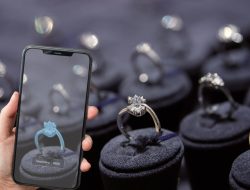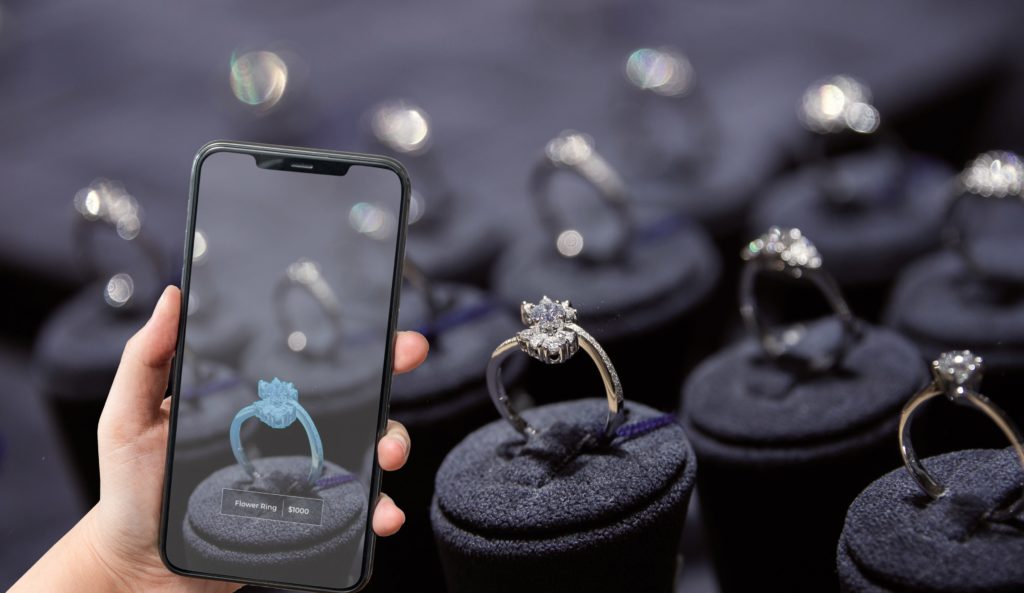Web Augmented Reality Vs Native Apps in Jewelry – One of the most common questions I get from jewelry brand clients is “Why develop an app for virtual try-on and not use augmented reality on the web?”, which is ultimately a bad customer journey.
Web Augmented Reality Vs Native Apps in Jewelry

swarovskijewelry – These concerns are valid, and recent advances in AR technology have made online trial solutions possible. However, you won’t find web-based virtual accessories for things like rings.
In this article, I will discuss some of the challenges of developing virtual jewelry accessories online posing risks for brands.
How jewelry brands use virtual try-ons
Consulting firm McKinsey estimates that the total value of the jewelry market will reach $360 billion by 2025, showing steady growth from $280 billion in 2019. Sales will make up 18-21% of global sales in 2025. jewelry sales, compared with 13% in 2019, marking a significant shift in the industry to e-commerce.
For businesses, this trend means looking for engaging and interactive digital marketing channels that distract customers from other things they could be doing online or on their smartphones.
The ultimate goal is to beat the competition by offering potential customers a better online shopping experience that mirrors in-store interactions with products.
This is why jewelry brands are interested in AR and especially virtual try-ons. . available via an AR-based application. The technology uses a smartphone camera to depict the desired jewelry in 3D on an image of the customer’s hand or face. This allows them to see how a diamond ring or earring would look in real life.
Some of the biggest names in the jewelry industry have launched virtual try-ons.
American jewelry company James Allen offers such a feature. Customers can upload a photo of their hand to their smartphone and select a ring from a virtual gallery to see how it looks.
The Diamond Hedge app, an independent jewelry marketplace, allows users to select diamonds from available options. and adjust it. ring calling and try it out virtually. Famous brands such as Tiffany and Co and Pandora have also experimented with virtual testing.
Most of these examples use native software. But are modern web extensions that enable virtual experimentation in the browser and the power of augmented reality on the web also a viable option for the jewelry industry?
What is web-based AR?
Does web-based augmented reality allow users to activate AR? experience? via mobile or desktop browser without downloading the app. Typically, AR experiences are triggered by a custom URL or QR code (tag). Users scan markers to view AR content in their environment using a browser.
Web-based virtual experiments are largely based on AR-enabled plug-ins and real-time tracking technology. Because the machine learning (ML) model of this technology is available in the browser, the code is also available to anyone who wants to copy or study it.
For example, the Facemesh package for tracking important facial landmarks is very popular. ML models are published by developers and can be used to develop experimental solutions.
Similar examples of online AR software are widely used in fashion retail. Virtual try-ons of makeup, glasses, hats and other accessories are based on facial tracking, which creates an estimate of the 3D surface geometry of the face and places the product in the correct position. For example, Maybelline, Eyebuydirect, Fashioneyewear, and Jeans allow customers to try their products without leaving their browser.
Baca juga : Why You Should Consider Trying AR Jewelry
Challenges of using web-based AR in virtual ring testing
One of the most important obstacles to virtual ring testing in jewelry, especially for rings, is the lack of ready-to-use, high-quality open source solutions. There are open source fingerprint models, such as the MediPipe Hands model, but their capabilities are limited to hand size estimation and finger detection.
Prototyping a virtual ring is a painstaking process that requires complex calculations to estimate finger width, landmark detection to ensure the 3D ring model renders correctly, and a lot of approximation until the desired result is achieved.
This leads to the first challenge, which is testing the virtual ring in the browser.
Jewelry brands can lose their competitive advantage
Anything online can be copied, including jewelry 3D models, renderings, and shaders, and even code for ML solutions. Once a web page containing an AR test is loaded into a browser, any skilled person can copy the information needed to create a similar solution. This is a direct threat to jewelry brands – by offering personalized virtual samples, they can lose their competitive advantage.
It is much more difficult to copy something from a native application, because all data is encoded in binary code that has only ever been experienced. software engineers can understand it.
Unclear scope of development
Web-based AR – many features need to be tested as each one goes live. For example, several versions of one trial extension must be developed to ensure compatibility with different browsers – Opera, Safari, Chrome, Firefox, etc. What if, for example, the user’s browser has not been updated? Web-based testing doesn’t work well in this case, so multiple versions have to be created for each browser. Camera access also remains an issue in online augmented reality experiences.
The biggest problem is that the scope of development is unclear. In comparison, developers working with native apps only need to provide two versions of the solution, one for iOS and one for Android.
Baca juga : AI Video Yang Membantu Kemudahan Content Creator
Network delays
The problem is that augmented reality online experiences rely on Wi-Fi or cellular networks, both of which can cause data transfer delays, affecting the overall performance of the test browser. The native app does not require an internet connection. Additionally, native apps have access to all devices, while web pages only have access to certain features.
Web browser rendering capabilities are also limited. Rendering and manipulating photorealistic 3D jewelry models is resource-intensive in terms of computing power.
What about other alternatives?
Despite the above challenges, online experiences with augmented reality, including virtual samples available in the browser, can bring important benefits. towards brand:
- Ability to track brand engagement with Google Analytics and audience interest;
- Audience engagement is better than in-app AR;
- Integrating an AR experience into an existing site is easier than creating native ads. AR-enabled app from the start.
At this point, you need to consider whether there is a solution that combines the best of both worlds – augmented reality on the web and native apps.
The answer is that the browser app is partially functional. as an application logged in from the browser. AlRosa, a group of diamond mining companies, tested this format and launched a solution that directs visitors from the company’s website to the app without needing to download anything.
It can be a viable alternative to full-scale online AR testing solutions, helping brands avoid the potential risks mentioned above.
Postindustrial helps brands enhance their digital presence with AR-based solutions. Leave us your contact details below and we will contact you to discuss your project.

